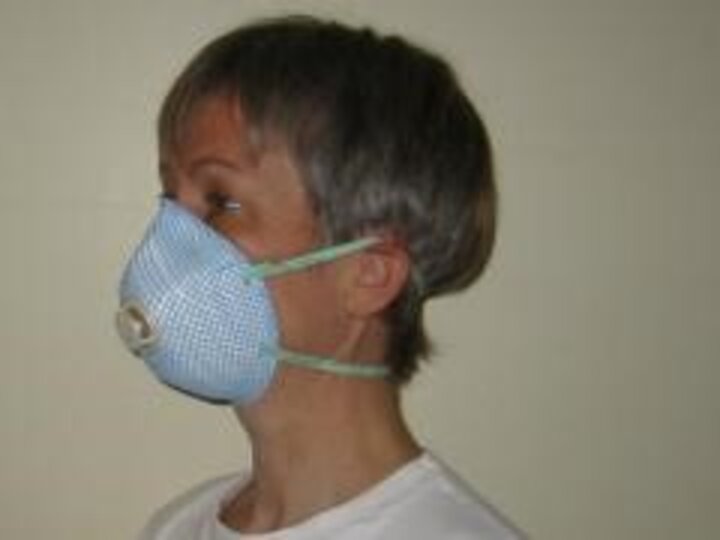Working around grain means working around dust and chaff. Dusts have the potential to cause health problems or even permanent lung injury. Breathing dust from stored grain or old hay means breathing in fecal material from rodents and birds, as well as molds, fungus, and bacteria in the enclosed environment.

To avoid developing respiratory problems from working in dusty farm conditions, wear a NIOSH-approved, two-strap mask, advises Ellen Duysen, community outreach specialist for the Central States Center for Agricultural Safety and Health (CS-CASH). The Center is part of the Department of Environmental, Agricultural and Occupational Health at the University of Nebraska Medical Center in Omaha.
When fitting the mask, make sure it remains sealed when turning, scooping, talking, etc. and be aware that facial hair will compromise a proper seal.
The National Ag Safety Database also recommends:
- Use a quality, disposable dust mask or a respirator with replaceable cartridge to filter dusts, help provide clean air. Change the mask or cartridge frequently.
- Filter masks may provide adequate protection from common agricultural molds, dusts, and chaffs; however, they will not protect the wearer from agricultural gases. A self-contained breathing apparatus similar to those worn by firefighters is needed to work in oxygen deficient areas such as in freshly filled silos, manure pits, or in grain bins during and after fumigation.
How to Properly Fit a Two-Strap Mask
The more contact points a facial mask has on the face, the better protection it offers. A vented, two-strap facial mask (Figure 1), for example, provides up to five contact points between mask and face.
To put on the two-strap mask:
- Cup mask in one hand and place it over your nose and mouth.
- Pull top strap over your head and above ears.
- Pull the second strap around the head so it fits snugly on neck.
- With mask in place, put fingers of both hands on the nose of mask to push down out of eyes. Do not pinch the nose piece as this creates a pocket for dust to enter.
- Adjust and pull straps back.
- To determine if mask is snug place both hands over mask and blow out. If you can feel air coming out from the sides of the mask, readjust until you can’t feel air blowing out.
- To remove, take off one strap at a time. Use until mask is soiled, then replace.
For more information on choosing the right mask, getting a good fit, and properly caring for it, view these short videos from the US Agricultural Safety and Health Centers.
